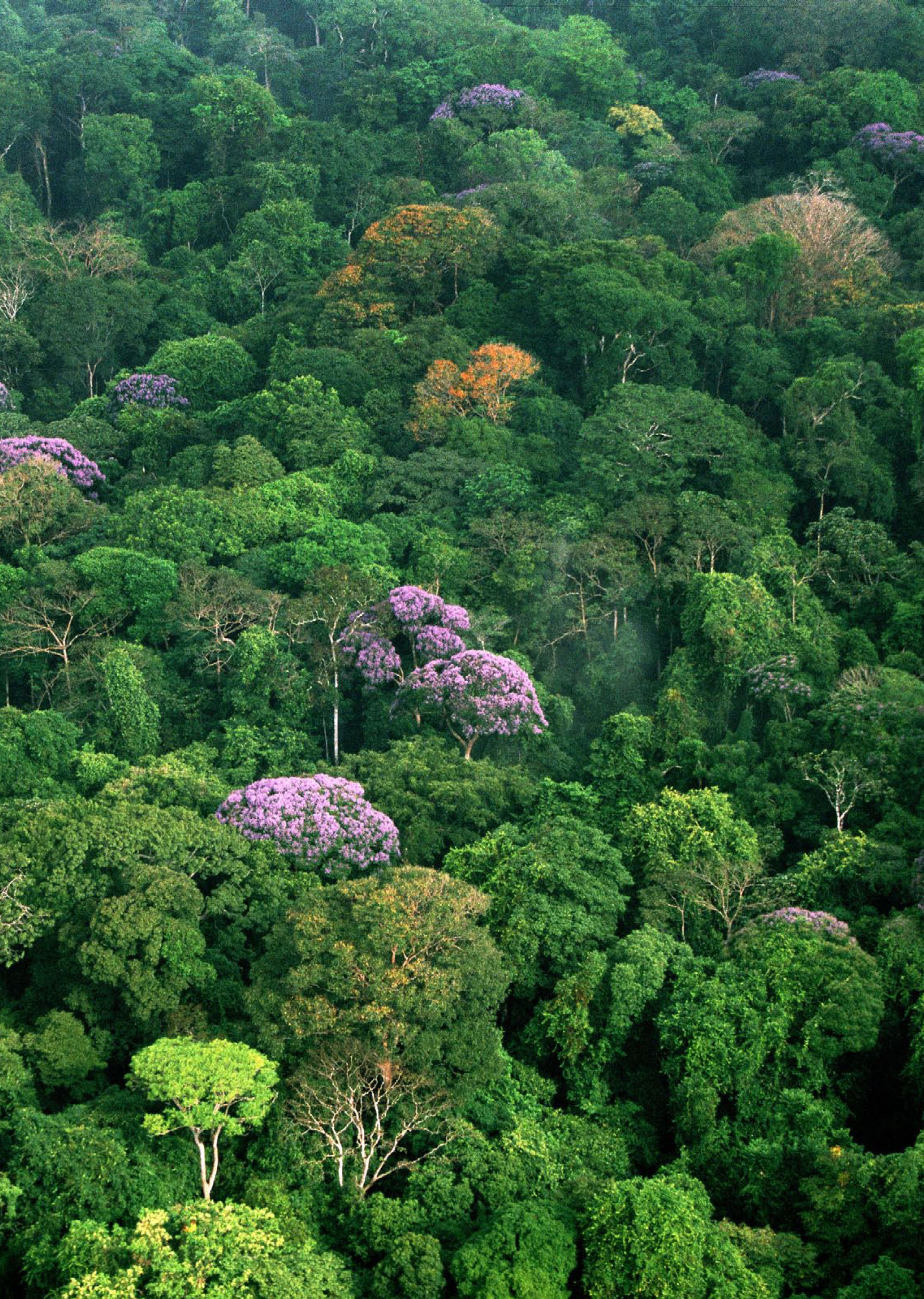The tropical forest canopy, often referred to as the uppermost layer of trees in dense forest ecosystems, plays a critical role in maintaining the health of our planet. Serving as a natural barrier against climate change, it is essential for carbon storage and overall forest vitality. Recent advancements, particularly through NASA’s Global Ecosystem Dynamics Investigation (GEDI) program, have provided unprecedented insights into how canopy height and structure reflect forest health. By measuring these canopies from space with high precision LiDAR technology, scientists are uncovering how climate change affects these vital ecosystems across regions like Asia, Africa, and South America. This understanding is pivotal, as taller canopies are directly linked to higher carbon storage capacities, making their preservation crucial in the fight against global warming.
When discussing the upper layers of tropical forests, terms like forest canopy, arboreal layer, and tree cover frequently arise in ecological studies. These high-reaching sections of the forest not only enhance biodiversity but also significantly influence the microclimate below, adapting to various environmental challenges. In recent findings, researchers employed cutting-edge spaceborne technology to evaluate the structural integrity and height variations of these vital ecosystems. Such investigations reveal the strong interplay between factors like climate dynamics and canopy architecture, ultimately influencing the carbon retention capabilities of these forests. Understanding these relationships is essential for conservation efforts aimed at safeguarding our planet’s lungs and enhancing resilience against climatic shifts.
The Importance of the Tropical Forest Canopy
The tropical forest canopy plays a crucial role in maintaining the ecological balance of our planet. This upper layer of trees is not only vital for supporting a diverse range of wildlife but also acts as a significant contributor to carbon storage. As highlighted in recent studies utilizing NASA’s GEDI technology, the height and health of the canopy are directly linked to the forest’s ability to sequester carbon, making it an essential component in the fight against climate change. Tall canopies, which generally indicate a healthy and thriving ecosystem, play a pivotal role in regulating temperatures and maintaining the microclimate necessary for various species to thrive.
Moreover, the forest canopy serves as a natural barrier against climate stressors such as heat and prolonged dry seasons. Research indicates that variations in canopy height are influenced by environmental factors such as elevation, solar radiation, and seasonal changes. Understanding how these factors impact the canopy is crucial for assessing the overall health of tropical forests and their capacity for carbon storage. By using advanced technology like NASA’s GEDI, scientists gain unprecedented insights into the dynamics of these vital ecosystems, enabling them to better predict how climate change will affect forest health.
Climate Change Threats to Tropical Forest Health
Climate change poses numerous threats to the health of tropical forests, primarily through alterations in weather patterns and prolonged dry seasons. Recent studies have shown that regions such as the southern Amazon are particularly vulnerable, with increasing dry periods leading to significant reductions in canopy height. As highlighted by research from NASA, understanding these climatic influences is essential for anticipating future changes in forest structure and function. The taller the canopy, the better the forest’s capacity for carbon storage; hence, monitoring these changes is critical for conservation efforts.
In particular, the interplay between climate change factors—like temperature spikes and drought conditions—has been linked to declines in forest productivity. A study published in the Proceedings of the National Academy of Sciences emphasized the need to analyze how these environmental drivers affect canopy height. Without this understanding, policymakers may struggle to devise effective strategies to protect these critical ecosystems. The findings reinforce the necessity for proactive measures in managing tropical forests to enhance resilience against climate change.
NASA GEDI: Monitoring Forest Canopy Dynamics
NASA’s Global Ecosystem Dynamics Investigation (GEDI) is revolutionizing the way scientists monitor the dynamics of tropical forests and their canopies. Using advanced LiDAR technology from the International Space Station, researchers can gather extensive data on forest structure, including canopy height and leaf density. This high-resolution information is crucial for understanding how various environmental factors influence forest health and carbon storage capacity. By providing a broader scope of study than previously possible, GEDI allows for assessments across vast tropical regions, enhancing our comprehension of global forest ecosystems.
The insights gained from GEDI not only reveal how canopy characteristics respond to changing climate conditions but also aid in identifying areas of concern that require urgent attention. For example, the data collected has shown that specific regions, such as parts of Africa and South America, demonstrate notable variances in how climate impacts canopy height. This localized understanding enables scientists and policymakers to prioritize interventions and conservation efforts in those vulnerable areas, ultimately contributing to improved forest management strategies aimed at combatting climate change.
Canopy Height as a Key Indicator of Ecosystem Health
The height of the tropical forest canopy serves as a critical indicator of overall ecosystem health and productivity. Taller canopies are often associated with robust carbon storage capabilities and rich biodiversity, reflecting the vitality of the forest below. The recent analysis using NASA GEDI technology has illuminated the connection between canopy height and a variety of environmental factors, providing insights into how forests can sustain themselves amidst changing climatic conditions. Thus, monitoring canopy height is paramount for assessing forest vitality and ensuring their role in carbon sequestration.
In understanding how canopy height varies with climate and other environmental changes, researchers emphasize the need for ongoing monitoring and data-driven policies. The relationship between canopy height and forest health indicates that conservation efforts should focus not only on maintaining existing forests but also on understanding the causes behind any declines in canopy structure. Such a multifaceted approach will aid in safeguarding these essential ecosystems, ensuring they continue to act as the Earth’s lungs for generations to come.
The Role of Elevation and Geography in Forest Resilience
Elevation and geographical location significantly influence the health and resilience of tropical forests against climate change impacts. Studies utilizing NASA’s GEDI data indicate that forests at various elevations exhibit distinct responses to climate variables such as solar radiation and dry seasons. For instance, forests in the Amazon are uniquely sensitive to the effects of prolonged dry periods, which can drastically alter canopy height and forest health. This geographical variability underscores the importance of tailored environmental management strategies that account for local conditions.
Moreover, understanding how topography affects forest dynamics provides insights into carbon storage capabilities across different regions. The interplay between elevation, moisture availability, and temperature variations is critical for developing effective conservation strategies. As researchers aim to extend their studies beyond primary forests, the findings from various elevations will aid in policy refinement, ensuring that conservation efforts are effectively targeted to preserve the ecological integrity of diverse landscapes.
Advancements in Remote Sensing for Environmental Research
The integration of advanced remote sensing technologies, such as NASA’s GEDI, has marked a pivotal advancement in environmental research concerning tropical forests. By employing LiDAR technology, scientists are able to collect precise measurements of forest canopy structure on a scale previously unattainable. This level of detail enables a deeper understanding of the relationships between canopy height, forest health, and carbon storage, providing essential data for climate change impact assessments. As these technologies evolve, they hold the potential to greatly enhance our ability to monitor the effects of climate change on vital ecosystems.
Additionally, the wealth of data generated through remote sensing allows for a comprehensive analysis of ecosystem dynamics over time. Researchers can track changes in canopy height, evaluate the role of climate factors, and gather insights into biodiversity patterns within tropical forests. This ongoing monitoring is crucial for developing adaptive management strategies that mitigate the impacts of climate change while safeguarding forest health. Ultimately, advancements in remote sensing are transforming our approach to environmental science, making it possible to better protect the world’s tropical forests.
Preventing Climate Change Impacts on Biodiversity Hotspots
Tropical forests are recognized as biodiversity hotspots, and preserving their health is crucial in the fight against climate change. The intricate relationships between numerous species found within these forests depend heavily on the integrity of the canopy and overall forest structure. Disruptions caused by climate change, such as altered rainfall patterns or increased temperatures, can significantly threaten these delicate ecosystems. Research continues to show that safeguarding tropical forests will not only protect wildlife habitats but also enhance global carbon storage, contributing to climate stabilization efforts.
In light of these challenges, effective conservation policies must prioritize biodiversity preservation within tropical forests. By understanding the unique environmental drivers that affect canopy height and forest health, scientists and policymakers can better devise strategies to mitigate negative climate impacts. These include habitat management practices and restoration efforts aimed at enhancing forest resilience. Ultimately, taking action to protect these biodiversity hotspots is essential for maintaining ecological balance and supporting the Earth’s efforts to combat climate change.
The Future of Tropical Forests and Climate Change Adaptation
The future of tropical forests in the context of climate change hinges upon our ability to adapt and implement effective conservation strategies. The ongoing research facilitated by NASA’s GEDI provides critical insights into the factors impacting canopy height and overall forest health. As climate models predict more severe weather patterns, understanding how tropical forests will respond to these changes becomes increasingly urgent. Extension of studies into lesser-disturbed areas may reveal new strategies for adaptation and resilience in the face of climate challenges.
As we move forward, integrating research findings into policy frameworks is vital for enhancing the conservation of tropical forests. By prioritizing areas that are at high risk of climate change impacts based on canopy height and health, policymakers can make informed decisions to allocate resources efficiently. Additionally, fostering collaboration between scientists, conservationists, and policymakers will be essential for developing innovative solutions that ensure the protection of these vital ecosystems amid ongoing climate change.
Call to Action: Prioritizing Forest Conservation Efforts
The evidence presented through studies utilizing NASA’s GEDI technology underscores the urgent need for immediate action to conserve tropical forests. These ecosystems are not only crucial for biodiversity but also serve as essential carbon sinks, playing a significant role in mitigating climate change. As forest health is compromised by environmental stressors, it is imperative that both global and local communities prioritize conservation efforts. This includes protecting existing forests and restoring damaged areas to enhance their capacity for carbon storage and biodiversity.
Advocating for sustainable land-use practices and reallocating resources toward forest conservation initiatives can create lasting impacts on the future health of our planet. By recognizing the interconnectedness of tropical forests, climate change, and biodiversity, we can cultivate a holistic approach to environmental stewardship. It is essential for individuals, governments, and organizations to collaborate in safeguarding these vital ecosystems, ensuring they continue to function as the lungs of the Earth and play their role in combating climate change.
Frequently Asked Questions
What is the significance of the tropical forest canopy in understanding climate change?
The tropical forest canopy plays a crucial role in understanding climate change as it serves as an indicator of forest health and ecosystem productivity. Research using NASA’s Global Ecosystem Dynamics Investigation (GEDI) highlights how canopy height variations can reveal the impacts of climate change on carbon storage and biodiversity.
How does canopy height in tropical forests relate to forest health and carbon storage?
Canopy height in tropical forests is directly related to forest health and carbon storage. Taller canopies generally indicate greater above-ground biomass and higher carbon sequestration capabilities. Studies show that climatic factors and environmental conditions significantly affect canopy height, which in turn reflects the overall health of the forest ecosystem.
What technology does NASA use to measure tropical forest canopy height?
NASA employs the Global Ecosystem Dynamics Investigation (GEDI), a LiDAR laser instrument mounted on the International Space Station, to measure tropical forest canopy height. This advanced technology enables scientists to gather extensive data on canopy structure and assess the health of tropical forests globally.
In what regions are changes in tropical forest canopy height most evident due to climate change?
Research indicates that changes in tropical forest canopy height due to climate change are particularly evident in regions such as the southern Amazon, Asia, and Africa. Prolonged dry seasons significantly influence canopy height in these areas, making them vulnerable to climate impacts.
How does the canopy in tropical forests help mitigate climate impacts during heat waves?
The canopy in tropical forests can buffer the microclimate and help lower temperatures during heat waves. Taller canopies provide shade and reduce direct sunlight penetration, which can help maintain cool conditions below and protect the forest ecosystem from extreme temperature variations.
Why is it important to study variations in tropical forest canopy height for climate-change policies?
Studying variations in tropical forest canopy height is essential for climate-change policies as it aids in assessing the carbon sequestration potential and conservation value of different forest areas. Understanding these variations allows policymakers to identify at-risk regions and prioritize conservation efforts to combat climate change.
| Key Point | Details |
|---|---|
| Tropical Forest Canopy Importance | Considered Earth’s lungs; crucial for carbon storage and ecosystem productivity. |
| Impact of Climate Change | The study used NASA’s GEDI technology to assess the effect of heat, drought, and other factors on tropical forest canopy height. |
| Research Findings | Taller canopies indicate high carbon storage. Canopies buffer microclimate effects, affecting temperatures during heat waves. |
| Geographical Focus | Study included tropical forests in Asia, Africa, and South America with minimal human disturbance. |
| Canopy Height Variation | Environmental factors like climate, topography, and soil properties explain most variations in height; dry seasons crucial in southern Amazon. |
| Future Research Directions | Researchers aim to extend studies to other forest types, assisting policymakers in targeting areas vulnerable to climate change. |
Summary
The tropical forest canopy plays a vital role in maintaining ecological balance, serving as one of Earth’s primary carbon sinks. The recent study utilizing NASA’s GEDI technology highlights the significant impact of climatic changes on canopy health, particularly in vulnerable regions like the southern Amazon where prolonged dry seasons threaten forest height and health. Understanding these changes is critical not only for assessing biodiversity but also for guiding effective climate-change policies aimed at conserving these essential ecosystems.


